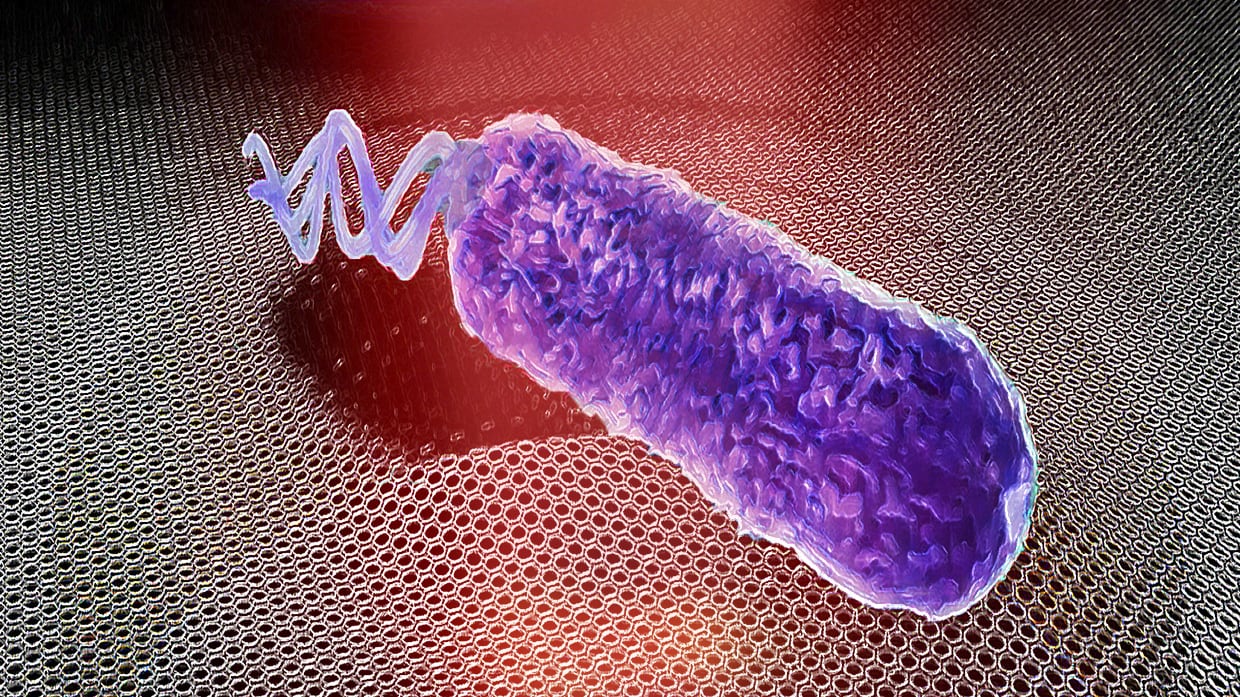There’s a symphony of music being played on your skin by the most unlikely of musicians: bacteria. Researchers at Delft University of Technology in the Netherlands have found out that bacteria make sound, and they’ve developed a method of listening to these tunes as they're made in real time. The new findings, published Monday in the journal Nature Nanotechnology, could be pivotal in determining whether a species of bacteria is resistant or susceptible to antibiotics, a serious public health concern given that more that antibiotic resistance leads to more than 2.8 million bacterial infections and over 35,000 deaths each year in the U.S.
The researchers used graphene, a very thin material made of a single layer of carbon atoms, to pick up a bacterium’s subtle sounds. When strains of E. coli were placed on a microscopic drum covered in graphene, the vibrations from the bacteria’s tails—called flagella that work like a boat’s propeller and rudder—beat against it causing a very, very soft sound.
“What we saw was striking! When a single bacterium adheres to the surface of a graphene drum, it generates random oscillations with amplitudes as low as a few nanometers that we could detect,” Cees Dekker, a physicist at Delft University of Technology and co-author of the study, said in a press release. “We could hear the sound of a single bacterium!”
“To understand how tiny these flagellar beats on graphene are, it’s worth saying that they are at least 10 billion times smaller than a boxer’s punch when [hitting a punching] bag,” Farbod Alijani, a mechanical engineer at Delft University of Technology and the study’s lead researcher, said in the press release. “Yet, these nanoscale beats can be converted to sound tracks and listened to—and how cool is that.”
The researchers also observed that when they exposed a bacterium to an antibiotic, the vibrations petered out after one to two hours. But if the bacterium was resistant, it just kept beating its drum. Alijani and his team believe this could be a method for determining antibiotic resistance in pathogenic strains of bacteria as they emerge, giving physicians a heads up in how to treat infections that arise.
“For the future, we aim at optimizing our single-cell graphene antibiotic sensitivity platform and validate it against a variety of pathogenic samples. So that eventually it can be used as an effective diagnostic toolkit for fast detection of antibiotic resistance in clinical practice,” said Alijani.
It may take a while to build a prototype fit for the clinic, but it seems the silent, little microbe is not so silent anymore.






